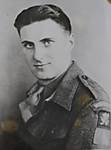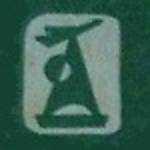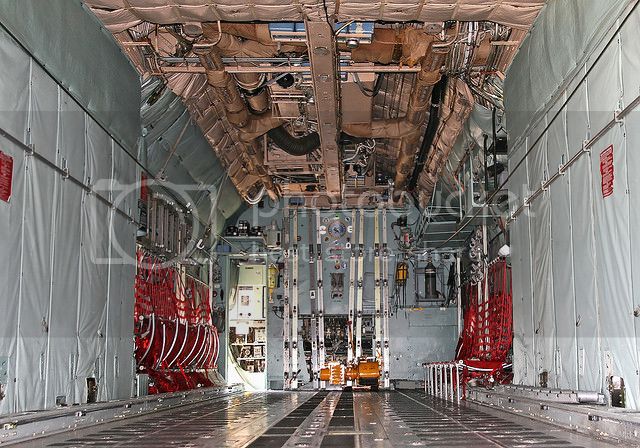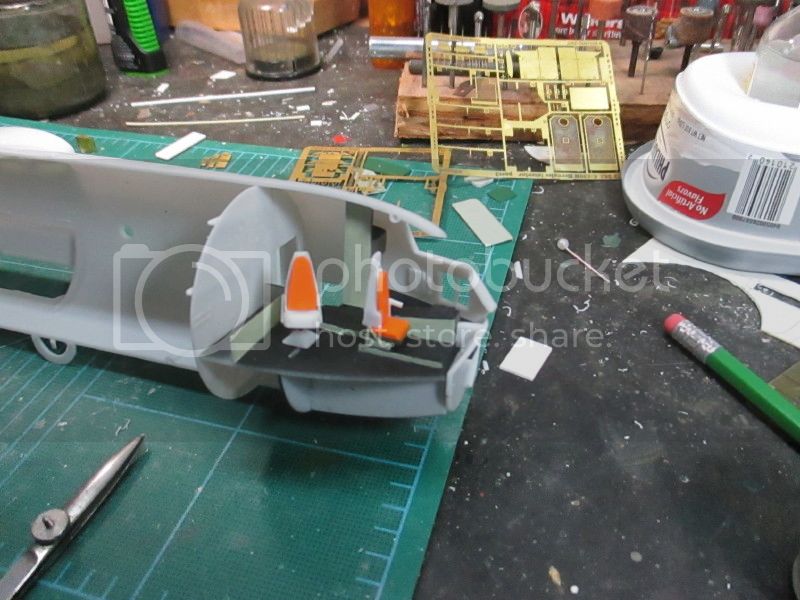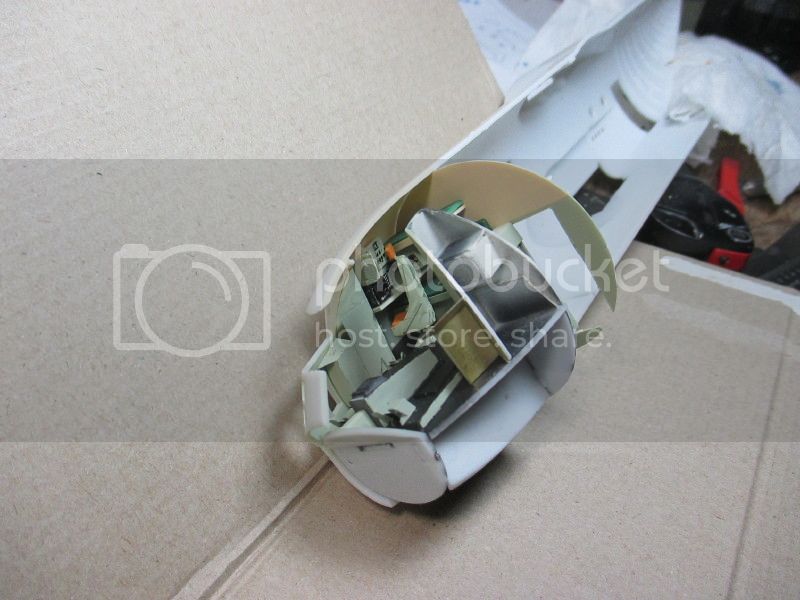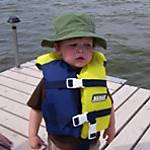Ah yes, the Hurky Turkey klunks along ever so glacially. Actually quite a bit of work has gone on, it just seems like very little of it was camera worthy. An inordinate amount of work went into stuff like this:

I really should have put something in the view to show some indication of the scale. The largest item on the sheet of styrene is the Eduard instrument panel, which is a whooping 2.5 cm wide. The O2 walk around bottles are from the Quickboost 1/72 B-24 oxygen bottle set which also includes the large installed bottles used on most WWII U.S. bombers. The regulators (the black round things) on the end of the bottles are disks punched from a 30 thousandths sheet of styrene with one of those rotary leather punches. Each one is drilled (No.70 drill) as much as possible to fit over a small stud on the end of each bottle. These things sit next to the large lower cockpit windows by the pilot's and co-pilot's feet, and being yellow, stick out like a sore thumb, so they really oughta be there. Plus there's a couple more back in the cargo compartment (actually more than a couple) but only a couple where they'll be obvious. The first aid kits are sheet styrene laminated (40, 30 and 5 thou.) The pouch itself is 9 scale inches square with the backing sheet 9x12. The pouch part is sanded on the edges and corners to give it less of a box shape. The red crosses come from a 1/35 medic's armband decal on an old Scalemaster sheet and punched out with one of those nifty pinpunch sets. Getting the decal from the sheet onto the pouch was a cross between a sharp-stick-in-the-eye and watching paint dry. It took forever for the decal to loosen up and then get it off the backing which was exactly the same size as the decal. The fire extinguisher is a styrene tube with some craft wire orgamy for a handle and a small (next to impossible to see against the background) 10 thou. disk for a pressure gage. The black item next to the bottle is an emergency light that was next to the escape hatches that would light if power was cut off. (we would use them on occasion if they were handy and a flashlight wasn't) The white rectangle is the future cover for the FLIR (Forward Looking Infra-Red) camera that was mounted just aft of the nose landing gear. The other black items are a couple of bits of equipment that will be mounted on the FLIR cover (busy things up a bit)
A closer shot of the O2 bottle and First Aid kit:
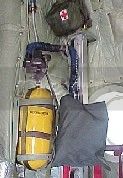
The flight deck seats, with the cushions, Eduard seatbelts and bits added to dress things up. The seats will be about the last things added to the flight deck to keep from breaking something off.

Up to this point I've been hammering away at the fiddly bits in the nose and trying to make sure I don't install something that is going to be in the way of some later piece that needs to go in behind it. Since I'm making most of this up as I go along, the "Master Plan" gets a little fuzzy on occasion. I also noticed that sometimes the photo-etch does what it's suppose to do, other times it goes everywhere except where I want it. In those cases I've found it best to just let it be, and come back later a try again (this usually works) but it is time consuming on an already long project. In order to speed things up a bit, I decided to get a little more eclectic on by approach and move around to whatever needed doing and wouldn't blow a circuit breaker. In that vein, at one point I decided to tackle the main wheel wells. I decided to throw in a little extra detail than would be needed, you can't see much in a C-130 wheel well unless you dismantle the aircraft, and this kit takes that aspect to heart. After some digging to refresh the memory I came up with these:

The aircraft jacked and the struts fully extended. (right main gear) Of note in the shot, the right taxi light mounted to the gear door.

A good detail shot with the wheels removed. Note, there are no torque links on the main gear of C-130s as depicted on the MLG (Main Landing Gear) of the Italeri kit. There is a scissor bracket mounted just aft of the forward strut (seen on this shot) to keep the wires for the anti-lock breaks from getting pinched when the strut is compressed, which kinda looks like a torque link. The actual torque link is the large cross member connecting the forwar and aft struts. (left main gear)
Just another shot of the taxi light.

I decided to add the "U" beams forward and aft of each strut that the struts ride up and down in (there's a story behind that, but I won't bore you with it here) and I added some vertical strips just for effect. There actually is a panel above the gear with cut-outs for the struts as you see here, which I added. You'll have to trust me on this, there's more reliable pictures of the Loch Ness Monster and Bigfoot than there is of the top portion of a C-130 wheel well. Actually a few styrene strips for reinforcement on those and I'd be spot-on. (even my anal-retentiveness has limits)
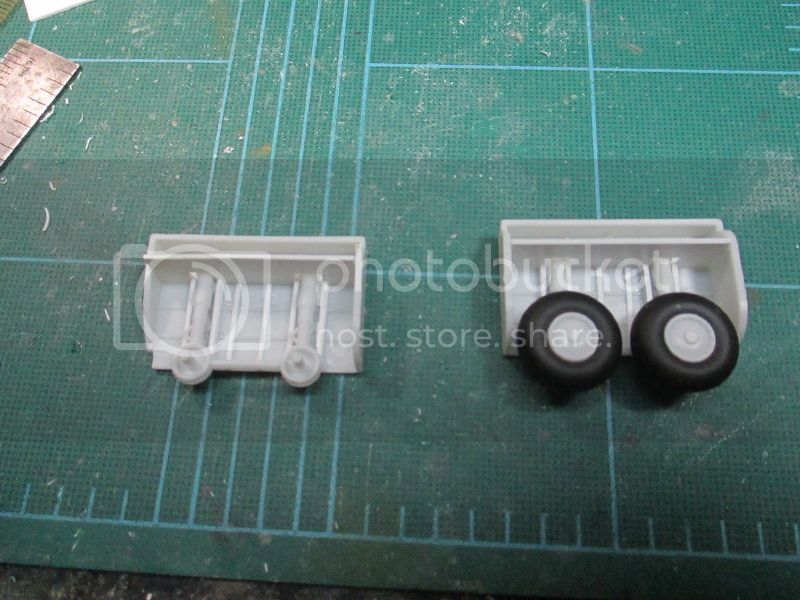
Eduard's addition to the MLG doors, (the body of the taxi light is styrene rod, mine)

A good portion of this whole "you'll never see it again" exercise is to practice scratching up detail just based on un-scaled photos and to try some new (for me) techniques. In this case I wanted to try using washes made with powdered pastel chalks. I first tried the chalk with water mixed with detergent and a little alcohol to cut the surface tension. I was not impressed, it still tended to bead-up and not flow well. This time I went with straight 70% alcohol and had much better results. I don't think it flows quite as well as solvent based washes, but it works pretty well on enamel paint.

The wells were base panted with Model Master non-buffing Aluminum and then dry-brushed after the wash with Floquil Old Silver. The body of the struts were painted Model Master Aircraft Gray (gloss)


The Model Master air brushing metalizer paints look real good on the Eduard brass parts.
The end result:

I also found that the wheels will have to be attached before the wheel wells are installed in the fuselage halfves, which is going to complicate my exterior masking down the road.
And this pretty much shows why all the above is an exercise in futility:
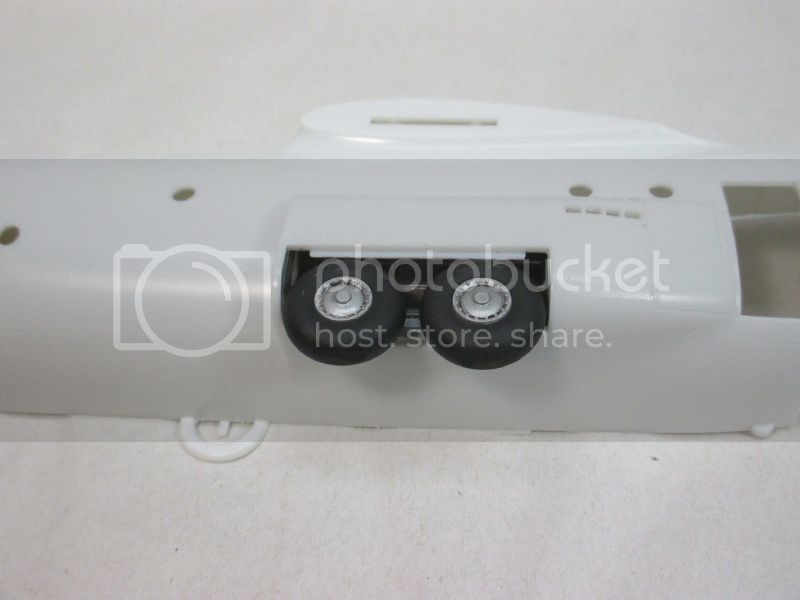
Just the main gear.
With wheel well doors:

What wheel wells?
The nose gear.

And the aft nose gear door:

The kit part isn't bad, but the Eduard brass does a good job of sprucing it up.

A good diagram of the nose gear structure (for those who are interested):

And the real thing.

Now the kit part plus Eduard and some sheet styrene:

The brass parts sticking out the back in reality should be tubes (they're the hydraulic steering actuators) but for what will be seen after the wheel well is closed up, (the forward nose gear door is closed on the ground) what's there will do.
This is Eduard's answer to the electronics racks under the flight deck, plus some donations from my trusty B-17 instrument panel decals for a little added interest. Try as I might with different paint, the black I chose for the "black boxes" still pretty well blended in with the black that is suppose to be empty space.

Oh well, Eduard has an answer for that as well:

The screen thingy! I don't know if I ever saw one of these things but for these purposes it'll do. The galley above the equipment racks turned out pretty well, The oven (the box with the two black knobs, on the left) and the cooler (on the right) were painted with Floquil Old Silver, and in most light look slightly different than the Model Master Aluminum that makes up the rest of the galley. The latches on the various doors are Model Master Magnesium just to try and get a different hue.
Now a few shots showing the current state of the flight deck.
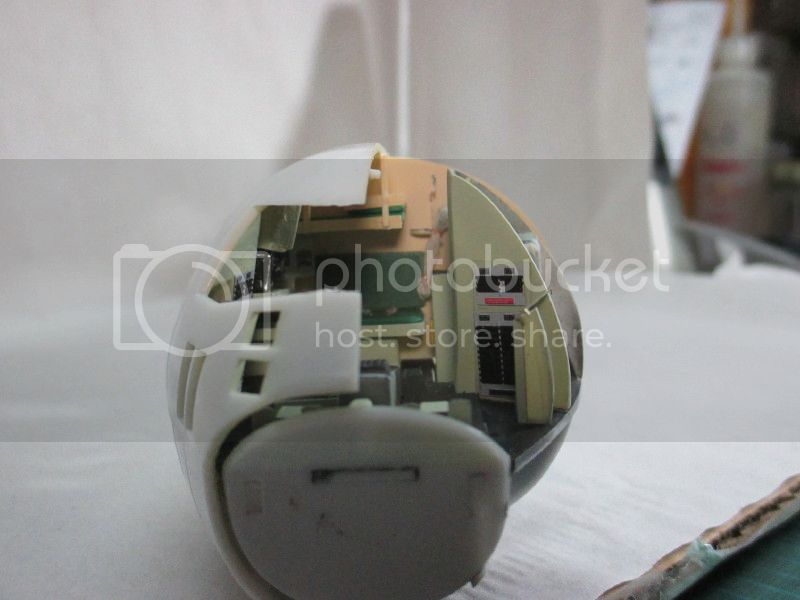
The circuit breaker panels added.

The busy work on the aft bulkhead:

The escape rope is a piece of darning thread run through a candle flame to get all those little fuzzy things that won't show until your done. It's probably a little long but after I got it all tied up I was damned if I'd redo it. (just remind the crew it's better too long than too short!) I really like how the crash light and 1st Aid kits turned out, I wish I could get a better shot.


I almost forgot again. The interior colors are Model Master Radome Tan for the buff flight deck overhead, and Model Master Sky Type "S" which is a good match for the Sea Foam green color that makes up most of the rest of the interior. More later.
Carry on.











